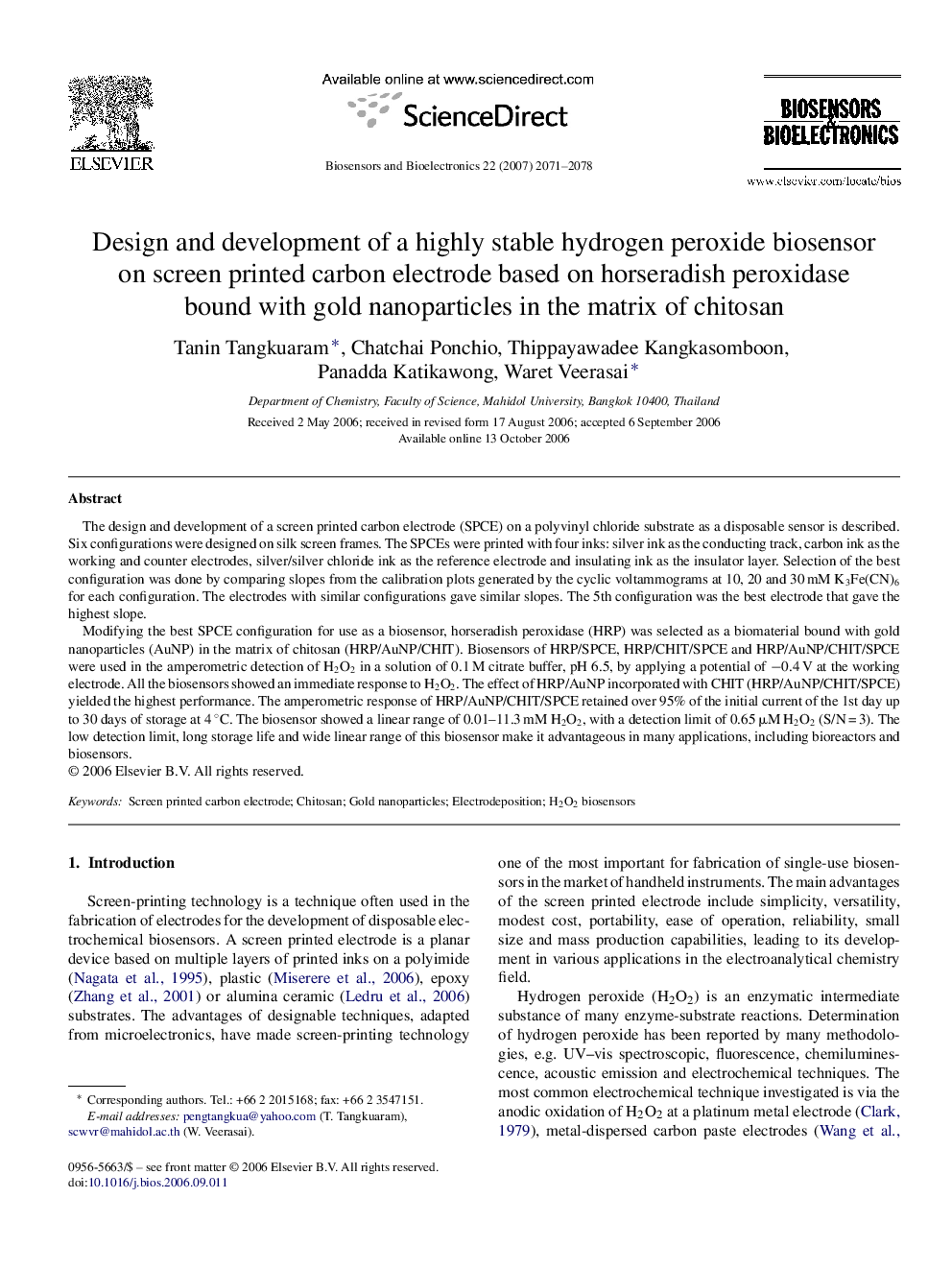| کد مقاله | کد نشریه | سال انتشار | مقاله انگلیسی | نسخه تمام متن |
|---|---|---|---|---|
| 870308 | 1470993 | 2007 | 8 صفحه PDF | دانلود رایگان |

The design and development of a screen printed carbon electrode (SPCE) on a polyvinyl chloride substrate as a disposable sensor is described. Six configurations were designed on silk screen frames. The SPCEs were printed with four inks: silver ink as the conducting track, carbon ink as the working and counter electrodes, silver/silver chloride ink as the reference electrode and insulating ink as the insulator layer. Selection of the best configuration was done by comparing slopes from the calibration plots generated by the cyclic voltammograms at 10, 20 and 30 mM K3Fe(CN)6 for each configuration. The electrodes with similar configurations gave similar slopes. The 5th configuration was the best electrode that gave the highest slope.Modifying the best SPCE configuration for use as a biosensor, horseradish peroxidase (HRP) was selected as a biomaterial bound with gold nanoparticles (AuNP) in the matrix of chitosan (HRP/AuNP/CHIT). Biosensors of HRP/SPCE, HRP/CHIT/SPCE and HRP/AuNP/CHIT/SPCE were used in the amperometric detection of H2O2 in a solution of 0.1 M citrate buffer, pH 6.5, by applying a potential of −0.4 V at the working electrode. All the biosensors showed an immediate response to H2O2. The effect of HRP/AuNP incorporated with CHIT (HRP/AuNP/CHIT/SPCE) yielded the highest performance. The amperometric response of HRP/AuNP/CHIT/SPCE retained over 95% of the initial current of the 1st day up to 30 days of storage at 4 °C. The biosensor showed a linear range of 0.01–11.3 mM H2O2, with a detection limit of 0.65 μM H2O2 (S/N = 3). The low detection limit, long storage life and wide linear range of this biosensor make it advantageous in many applications, including bioreactors and biosensors.
Journal: Biosensors and Bioelectronics - Volume 22, Issues 9–10, 15 April 2007, Pages 2071–2078